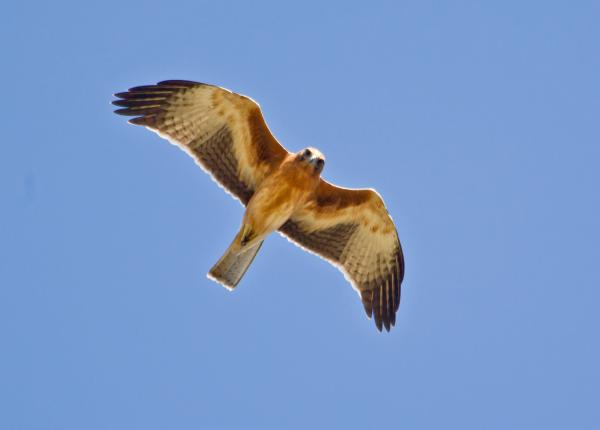Did You Know?
- There are no recognized subspecies of the Little Eagle
- This species is also known as the Australian Little Eagle
- Researchers observed this bird pirating a fish from a Whistling Kite. It has also occasionally been observed feed on other raptor species including a Brown Goshawk and a Whistling Kite!
How The Peregrine Fund is Helping
The Peregrine Fund is not working directly with Little Eagles, but our conservation efforts through habitat protection, education, and community outreach extend to all raptor species, including this owl. We also supply literature to researchers from our avian research library, which helps scientists around the world gather and share important information on raptor conservation. We also have created the Global Raptor Impact Network, which gives raptor researchers tools to more efficiently conduct their own studies while contributing to a global program. GRIN also provides citizen scientists a way to participate in raptor science and conservation.
Where it Lives
The Little Eagle is endemic to Australia. Throughout its range it is can be in a number of different habitats, including wooded areas, savannas, rough, hilly country and in areas with river gums (a type of tree) in inland areas.
What it Does
As its name implies, the Little Eagle is a small eagle, and of course, males are smaller than females. If you find yourself in Little Eagle territory, be sure to look up! This eagle is known to spend a lot of time soaring really high over forests or near forest edges. Researchers have documented that this species is capable of very swift flight while in a dive.
Why it Needs our Help
This species is categorized as Least Concern. It is considered to be widespread throughout much of its range. However, this species does face some threats, with the biggest being habitat loss and degradation. Individuals sometimes collide with fences, wind turbines and vehicles. Though historically these eagles were sometimes shot or poisoned, these activities no longer present a major threat to this eagle.
What it Eats
This eagle has a varied diet which includes mammals, such as rabbits, rodents, feral cats, and marsupials. It also takes birds as small as passerines, to cockatoos, corvids, and parrots. It will hunt reptiles including medium-sized lizards, skinks, snakes, and the occasional turtle. It also takes insects. It has been documented a few times feeding on fish, which may have been pirated or scavenged. It occasionally will feed on carrion, including road kill. When it is on the hunt, it employs a few different techniques. It might hover or use low gliding flights to search out prey, or it may wait and watch from a perch. It rarely captures prey in flight, but does glide or stoop to the ground to capture food.
Nests, Eggs, and Young
This species is a solitary nester, meaning one pair will nest relatively far away from other nesting eagles. The pair will work together to build a nest platform nest made of sticks, which they lines with green foliage. They usually choose to build their nest in the fork of a living tree. Though rare, they have been known to lay their eggs in the nest built and abandoned by another species. The female will lay between 1-3 eggs, though usually 2. After the eggs are laid, she will do most of the incubating of the eggs and brooding the very young nestlings, though the male will help. During this time, the male will be responsible for catching food for himself and the female. The adults must incubate the eggs for about 5-6 weeks. After the nestlings hatch, they will grow bigger and stronger each day. Researchers have documented rare cases in which one nestling has attacked and killed its sibling. After 54-66 days they will be ready to fly from the nest for the first time. They will remain dependent on their parents for about two more months, before they are ready to disperse.
Little Eagle and the World Center for Birds of Prey
The World Center for Birds of Prey offers fun ways to learn about birds of prey. Interactive activities, tours, interesting videos and a children's room with activities from coloring sheets to quizzes to costumes await you on your visit. Though we don't have any Little Eagles on our Avian Ambassadors team, you can meet a few live eagles up close including a Bald Eagle, a Harpy Eagle, and an Ornate Hawk-Eagle. There is also a touch table with owl feathers and other natural objects available for exploration.
References:
Debus, S. (2022). Little Eagle (Hieraaetus morphnoides), version 2.0. In Birds of the World (G. M. Kirwan, S. M. Billerman, and B. K. Keeney, Editors). Cornell Lab of Ornithology, Ithaca, NY, USA. https://doi.org/10.2173/bow.liteag1.02
Fisher, K. D. (2010). Breeding and diet of the Little Eagle Hieraaetus morphnoides in central Queensland. Australian Field Ornithology 27(3):119–127.
Global Raptor Information Network. 2022. Species account: Little Eagle Aquila morphnoides. Downloaded from http://www.globalraptors.org on 19 Aug. 2022









